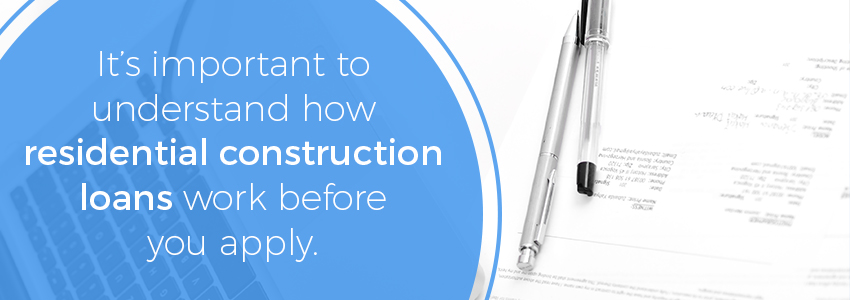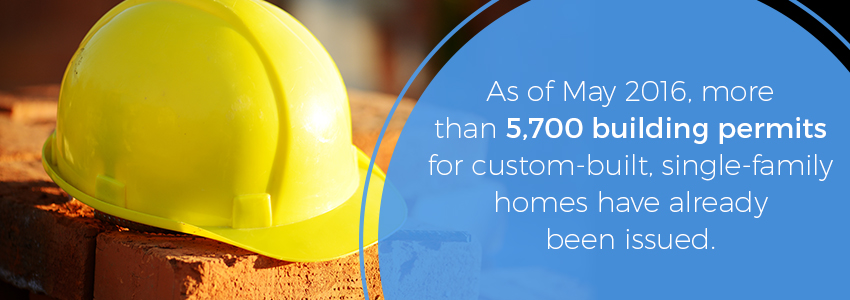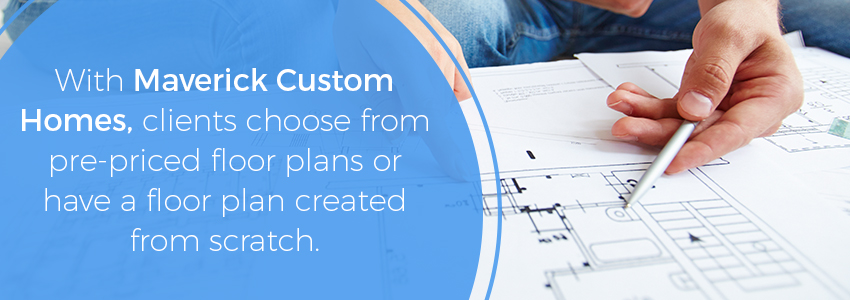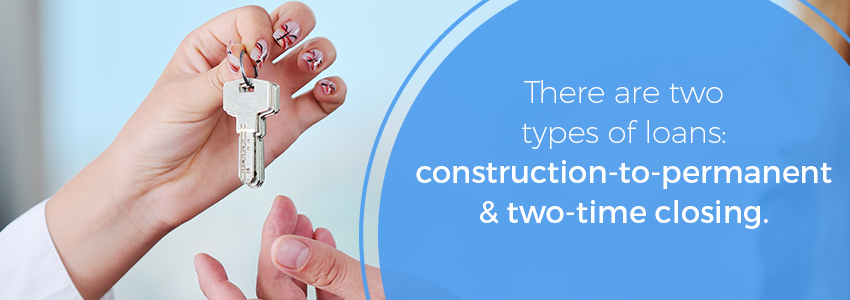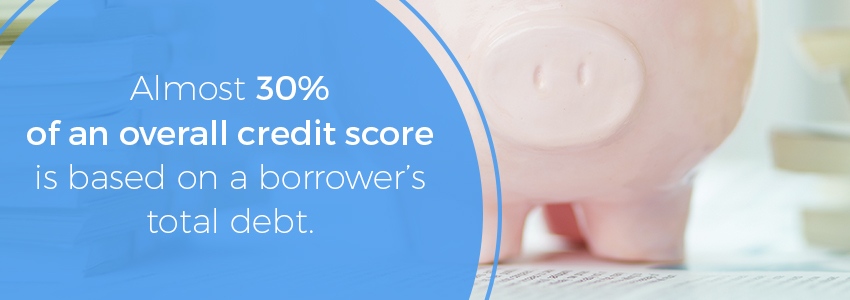Financing a New Home Build
To finance a new home build, you can apply for a construction loan from a lender. Even if you’ve bought a home before, however, the approval process and the terms you need to know are different from a traditional mortgage.
10 Tips for Financing a New Custom-Built Home
SDL Custom Homes works closely with clients to design and build a primary residence or vacation home in Central Pennsylvania. We understand that saving money is important. We know our clients value quality, and we always go above and beyond when it comes to building a home that will last.
To that end, we’ve created a list of 10 tips to guide anyone interested in the process of financing their new custom-built home.
1. Get Your Finances in Order
Qualifying for a construction loan requires patience and paperwork. It’s important to understand how residential construction loans work before you apply. Construction loans are not typical mortgages and have one noticeable difference.
When a bank offers a traditional mortgage, it’s using the purchased home as collateral. With a construction loan, the home doesn’t exist, so there is no collateral. It’s loaning money towards a future home. A bank doesn’t want to take this risk unless they’re sure the project is worthwhile. As a result, the borrower’s credit history and the building plans greatly impact the chances of getting approved.
Many new construction projects take at least six months to a year to complete. However, a larger, custom-built home can take as long as 16 months to complete. Seasonal changes and complications slow home building projects down, and prices of building supplies fluctuate. As a result, the lender carefully considers factors ranging from the construction plan to a borrower’s financial standing prior to approving a loan.
For construction-to-permanent financing, FannieMae has set forth guidelines that borrowers will be required to adhere to when building a new home. Among these rules are the following:
- A minimum credit score of 700 is required.
- A loan-to-value (LTV) ratio that does not exceed 70% is required.
The government allows a free credit check with all three bureaus each year. It’s important for borrowers to scour their Equifax, Experian and TransUnion reports to search for inaccuracies. Borrowers should check for notifications of late payments and look for accounts they do not recognize.
If they dispute any items, the next step is to send a letter to each bureau, clearly stating the issue and providing evidence that disputes the negative record. Disputes are usually investigated within 30 days, and the agencies have five business days to notify you about the results after the investigation is completed. However, if you receive a free annual credit report, the agency has 45 days to investigate the dispute.
Borrowers should talk to a bank about pre-approval. This interview process is not a guarantee of funding, but it’s helpful to find out exactly how much credit a bank will extend. Some banks require a down payment, so it’s good to know how much of a down payment is needed upfront. The pre-approval process helps form a maximum budget for the building project.
It’s also a good time for borrowers to discuss the type of construction loans. Some loans convert to a regular mortgage when the certificate of occupancy is issued, but others require the homeowner to reapply for a mortgage to pay off the construction loan. Each loan closing costs money. Most agree a one-closing construction loan is ideal.
2. Secure Your Land Purchase First
Before going to a lender with the loan application, borrowers need to have building plans, a contract with a home builder, a time schedule and a budget. Finding a home builder is important. One must have land in mind or work with the builder to secure a lot. The builder needs to see this plot of land when drawing up the blueprints and budget for a custom-built home. The slope of the land, size of the plot and zoning requirements impact the overall cost of a project.
SDL Custom Homes works with clients throughout Central Pennsylvania to find the perfect parcel of land. From lots in large neighborhoods to secluded parcels in the woods, we help customers find their dream building site.
3. Find a Home Builder
Land is important, but the right home builder is equally valuable. Lenders look at a home builder’s track record before approving a mortgage for building a new home. Borrowers do well choosing a local home builder with years of experience and a positive reputation in the community. Here are tips on finding the right home builder for a home construction project.
- Perform a thorough interview: Ask lots of questions when talking to a home builder in the initial interview. Find out who the builder works with and ask to see licenses. Find out if the home builder and all workers have workman’s compensation insurance. Make sure the builder has a solid business partnership with the contractors hired to complete work on your new home.
- Trust your instincts: If a builder makes a person feel uneasy or uncertain, it’s best to find someone else. There is no rule stating one must hire a company during a consultation.
- View references: Clients have every right to ask to see references. Call former clients and ask about their experience with the building process. Find out if they’re completely satisfied with their new homes.
At SDL Custom Homes, we place client testimonials online for easy access. We’re proud of our work. View video testimonials to see our exceptional building quality and read reviews from new homeowners.
4. Draw Up Plans and a Budget
After securing a home builder, clients work with the architect to create the design of the custom-built home. With SDL Custom Homes, clients choose from pre-priced floor plans or have a floor plan created from scratch. Customizing a pre-priced floor plan is also possible. We love to take our client’s sketches and bring them to life! Once the blueprints are drafted, a 3-D walkthrough allows the customer to see what their new home looks like. Adjustments are made from there.
There’s a lot to consider when it comes to the placement of a house. The home’s orientation should allow for lots of natural light. Views of the land come in at a close second. Connections to gas, water, sewer or septic and electricity also require careful consideration, as zoning laws come into play. Distance to bordering properties requires careful planning to meet town or state regulations. With this information, the builder decides the best location for the home. Stakes mark the construction site before excavation begins.
Builders use this information to create a budget. The materials, labor costs and equipment go into the budget. Costs for all the contractors and subcontractors get added in. Building permits and inspection fees also increase the cost of home construction. This final estimate goes to the lender as part of the loan application package.
5. Find a Local Lender
Talk to the experts at SDL Custom Homes for recommendations on local banks or credit unions. We understand our clients have questions regarding how to get financing for building a house, and a local lender is the best place to start. Local lenders better understand the market in the area and have developed relationships with home builders. Borrowers are more likely to get approval when they stay local.
Securing a local lender is only part of the process. Customers also need to compare interest rates and offers with multiple mortgage companies. With a construction loan, it’s typical to pay interest on the loan amount during the building process.
This often means borrowers pay two loans at once. They pay their mortgage on their current home. They’re also responsible for interest-only payments on the house being built. Paying two home loans often strains the budget. It’s worth shopping around for the best offer to keep payments as low as possible.
Borrowers also want to pick a bank with a solid reputation. Start by checking online reviews. Look at the complaints and see if issues were resolved in a timely manner. Finally, check the local Better Business Bureau for any complaints filed against a lender. Again, see how the bank tried to resolve the complaint.
Once the decision on a lender is finalized, it’s time to start the application process for a construction loan.
6. Apply for a Construction Loan
Construction loans cover the cost of building or rehabilitating a house, and they’re often shorter term, higher interest rate mortgages.
Typically, construction loans cover:
- Land
- Plans, permits, and fees
- Labor
- Materials
- Closing costs
- Contingency reserves
- Interest reserves
There are several types of construction loans you may consider:
- Construction-to-permanent loans: These loans convert to a permanent mortgage when building is complete. They’re best if you want predictable interest rates, and if you have a straightforward construction plan.
- Construction-only loans: These loans must be paid off when the building is complete. If you have large cash reserves or want to shop for a permanent lender during building, you may consider these loans.
- Renovation construction loans: These loans wrap the cost of major renovations into the mortgage. If you’re buying a fixer-upper and don’t have cash for renovations, these loans are a good option.
With construction loans, it’s important to research the risks and benefits of all options before making a decision.
Before heading to the lender, numerous forms of paperwork must be available. Have this paperwork in hand:
- Pay stubs for the past 30 days or self-employment tax forms, if applicable
- Tax returns for the past two years
- Copy of the past month’s bank statement for all checking and savings accounts
- Proof of secondary income such as child support, pensions or alimony payments
- Construction contract and blueprints
- Deed for land, if applicable
- Proof of deposit with the home builder
- Builder’s license and contact information
- Building cost spreadsheet
- Information on the down payment, including a gift letter if someone gifted the money for the down payment
The borrower completes the loan application with the lender. Paperwork is organized. Credit reports are ordered. Finally, the loan is sent to underwriting. The closing takes place after underwriting approves the construction loan. This process usually takes a few weeks. Once the loan is approved, borrowers make interest-only payments on the loan amount. The bank distributes funds as the construction progresses.
The bank sends a representative to the construction site or builder’s office with fund disbursals. They want to protect their investment. It’s important for the bank to see that builders are sticking to the timeline. They also need proof that the money is being used appropriately.
7. Budget for Surprises
Unplanned events happen without notice, especially in the world of home construction. It’s important to plan for surprise expenditures. As builders begin digging the land for a foundation, they may find a high water table or huge boulders that impact the excavation costs. Inclement weather often delays progress.
As it typically takes at least six months to build a custom home, material costs can fluctuate during the process. The cost of lumber increases and drives up material costs. Fuel prices increase and increase the cost of running gas-powered equipment. Replacement of back-ordered supplies or fixtures costs extra. Rush delivery of the replacements costs extra. The replacements may cost more, too.
It’s important to keep the building costs as close to the loan amount as possible. Still, fluctuations happen. Some banks create overage accounts to plan for these cost increases. If this happens, the overage is added to the final mortgage. If a construction loan is not set up with an overage account, it may be harder to secure a mortgage for the higher amount once the construction ends. Homeowners may find themselves paying for the difference out of pocket.
8. Don’t Take on New Debt
Buying a new car or going on a shopping spree and maxing out credit cards is a bad idea while the construction loan is in place. About 30% of an overall credit score is based on a borrower’s total debt. Lenders base the loan on the credit report retrieved during the application process. Adding more debt impacts a credit rating.
Borrowers who’ve taken on new debt often find their mortgage application denied or the loan amount reduced. It’s best to keep up with all installment payments. Avoid making any major purchases before finalizing the home mortgage.
9. Receive Certificate of Occupancy
When the construction is complete, a building inspector does a final walkthrough of the home. The inspector also checks paperwork for electrical inspections and an approved septic/sewer plan. Once the inspector completes these checks, he or she issues a certificate of occupancy. The certificate of occupancy gives permission for people to move into the house.
At this point, the construction loan is due. With a construction-to-permanent loan arrangement, the construction loan immediately converts into a mortgage. If the construction loan is not going to roll over, the application process for a mortgage starts again.
10. Convert Construction Loan to a Mortgage
A construction-to-permanent loan is ideal. Borrowers pay closing costs just one time. When the construction is complete, the loan balance converts to a mortgage. In some cases, the construction loan is not set to roll over. If this is the case, the homeowner must apply for a mortgage to pay off the construction loan.
There is no obligation to stick with the same bank for the mortgage in the two-closing process. It’s in the consumer’s best interest to shop around for the best interest rate and closing costs. However, it’s often beneficial to use the same bank. This bank already has the construction and inspection paperwork in hand. This eases the time spent during the mortgage application process.
Financing a custom-built home takes time, but the end product is worth every minute. Homeowners get a house that meets their tastes and is brand-new. There’s no worry about immediate upgrades or maintenance on older appliances, doors or windows.
Schedule a Consultation From SDL Custom Homes
SDL Homes follows 22 pages of building standards, while many of our competitors rely on just one page. We encourage our clients to tackle things like painting walls and trim to save money. Our goal is to help you turn your dream into a reality, and we want that new home to last our clients a lifetime.
Contact SDL Homes today for more information or to schedule a consultation.


